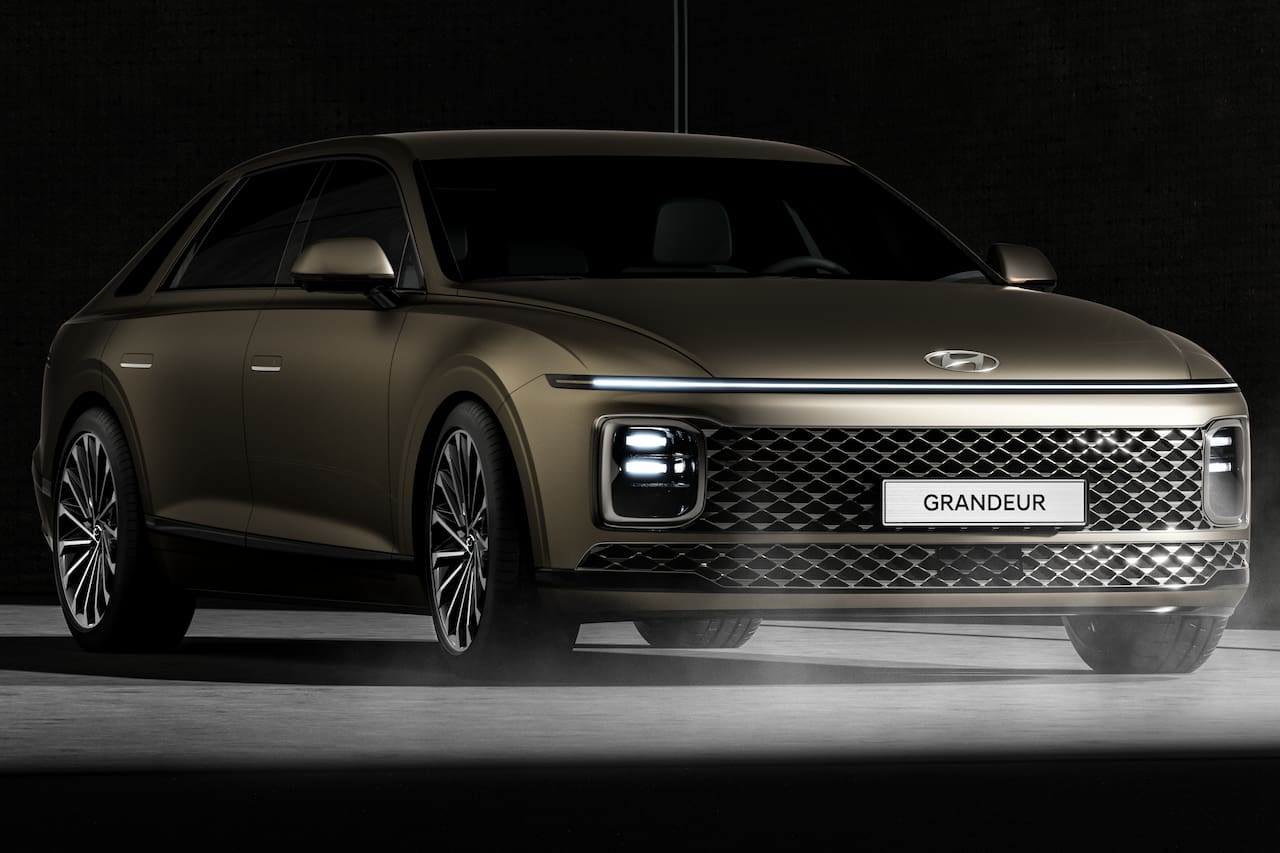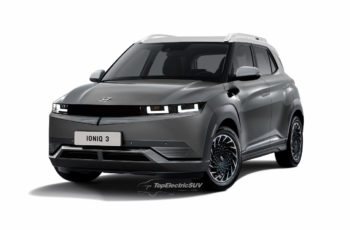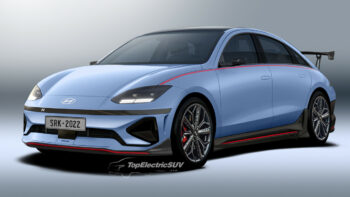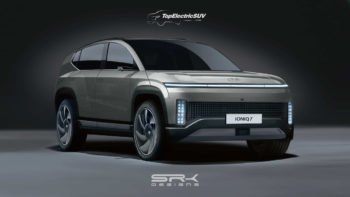Update (March 20, 2024): ‘Sales’ sections updated.
In 2022, Hyundai Motor Company (HMC) unveiled the Heritage Series Grandeur-inspired seventh-gen Grandeur in gasoline, gasoline-electric hybrid, and LPG variants as its new flagship sedan, a model targeted largely at customers in its domestic market. Local reports claimed earlier that a Hyundai Grandeur EV will follow shortly after, stating that 2023 would be the year of launch. However, there appears to be no immediate plan for a Grandeur Electric model.
No plans for a Hyundai Grandeur EV, says report
HMC doesn’t plan to produce an all-electric variant of the seventh-gen Grandeur, as per a report The Korea Herald published on December 11, 2022. The publication notes that according to Hyundai Motor, no plans for the manufacturing an EV version exist at the moment.
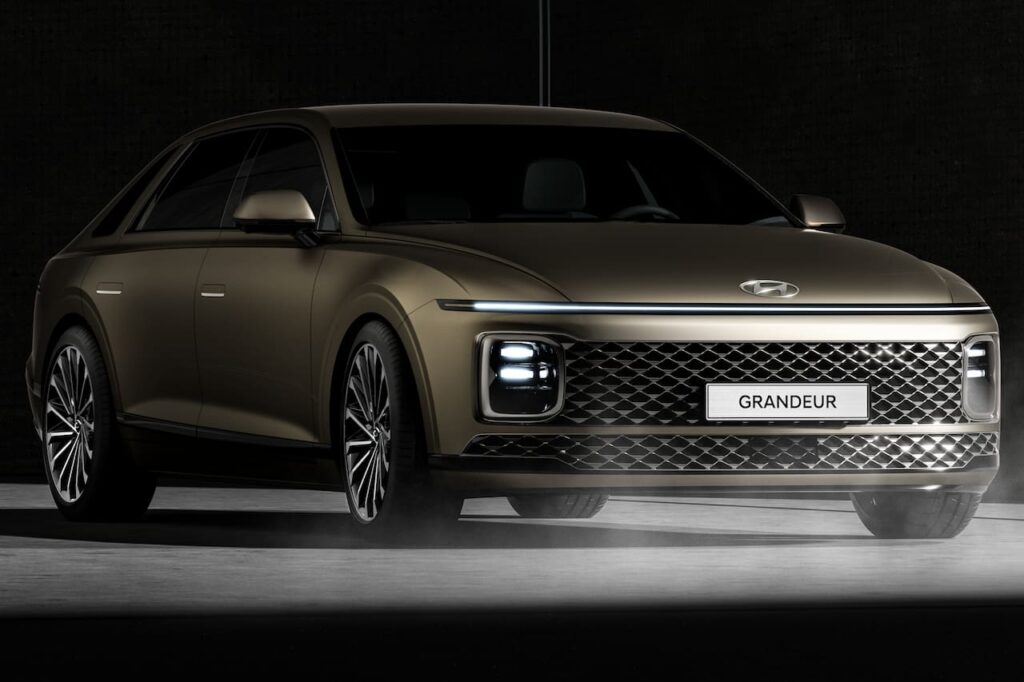
Had HMC (Hyundai Motor Company) actually planned a Hyundai Grandeur EV launch, it would’ve had two options for the platform. The obvious route was modifying the seventh-gen Grandeur to take in the battery and motor. Another way was developing a more advanced car based on the E-GMP (Electric-Global Modular Platform), the dedicated EV platform that underpins the Ioniq 6 and will spawn the 5-meter-long Ioniq 7 in the coming months.
On the Hyundai Grandeur Plug-in Hybrid
A Hyundai Grandeur Plug-in Hybrid is in the pipeline for S.Korea, scheduled to arrive in 2025, as per a report ET News released on August 27, 2023. The Grandeur PHEV was in the early stage of development, and some of HMC’s partners were already working on the components for its powertrain, claimed the S.Korean report. The company was said to have placed orders for parts for 80,000-90,000 Grandeur PHEVs per year.
HMC will employ Hyundai Motor Group (HMG)’s second-generation plug-in hybrid system in the Grandeur Plug-in Hybrid. The plug-in hybrid sedan is expected to deliver an electric range of up to 62 miles, which would be impressive given that South Korea has a stringent new vehicle testing program.
Design
The seventh-gen Hyundai Grandeur features a futuristic design with some hints of the original model that give it a classy retro touch. There’s a much higher level of sophistication, so high that many would fail to recognize it as a Hyundai without the “H” logo at the front and rear.
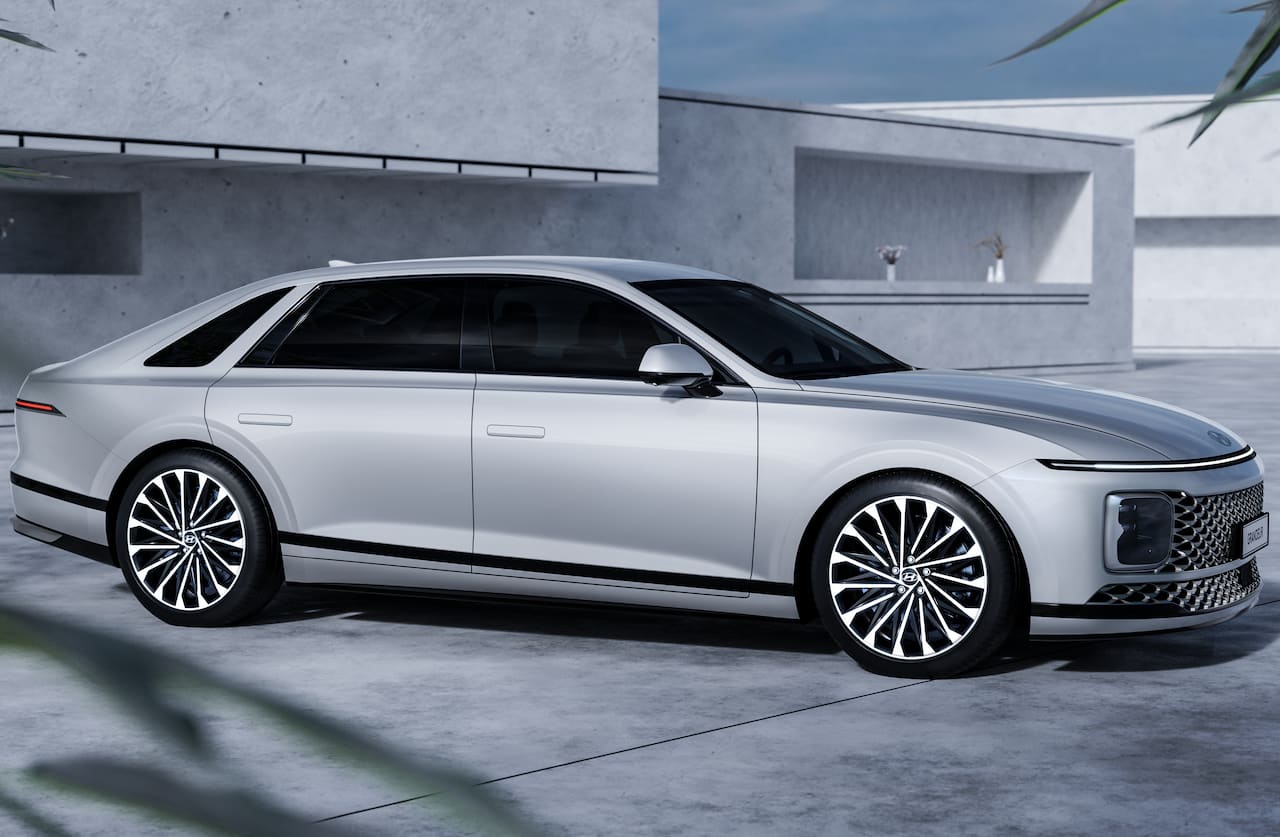
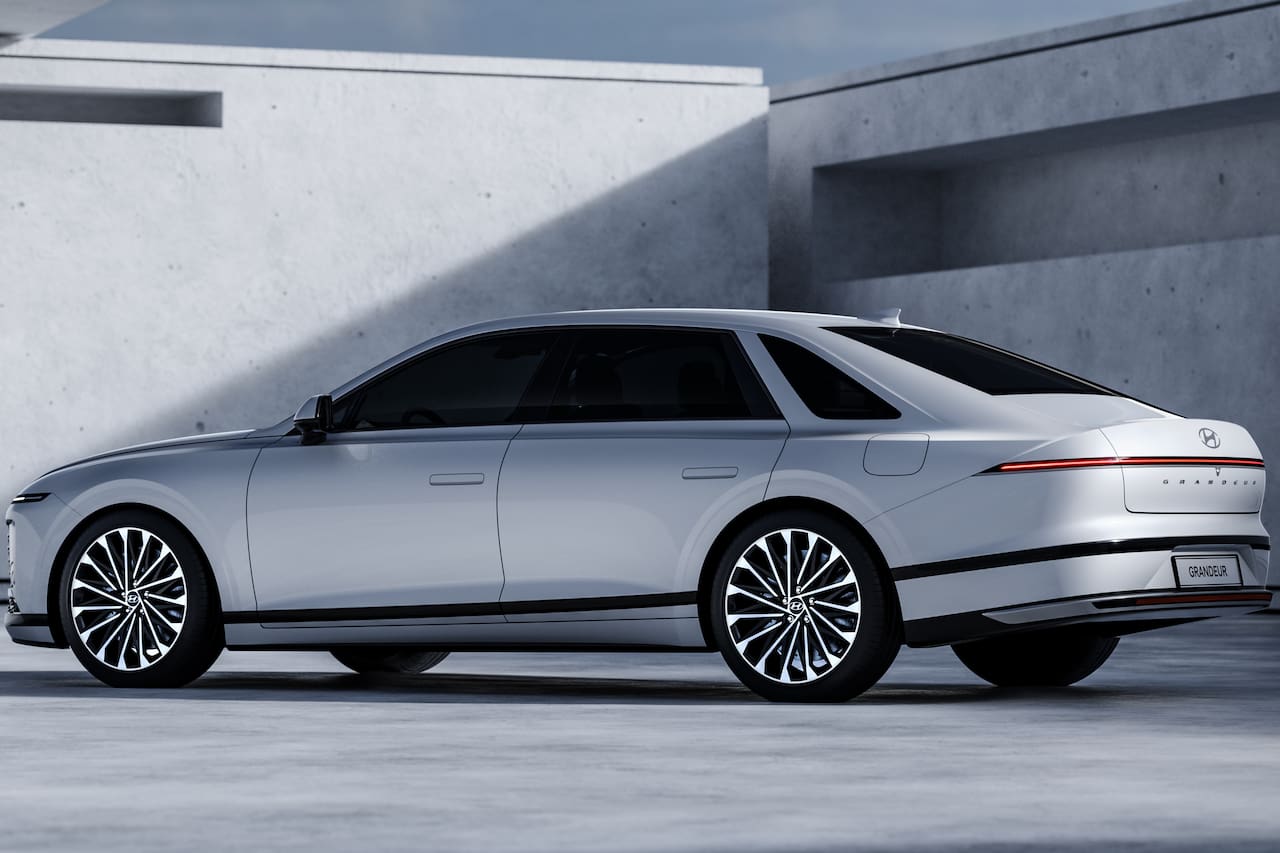
If you’ve been keeping an eye on Hyundai’s Asian market launches, the front-end of the Grandeur would look familiar. It has a space-age appearance with a ‘Parametric Jewel Grille’ featuring unique patterns, ‘Horizon Lamp’ (a thin horizontal light blade stretching across the width), and vertical headlamps positioned unusually lower. The spaceship-like look was introduced in the Staria, offered in select European countries like Germany and Turkey as well, and the Stargazer.
A single character line flows back from the headlamps to the rear combination lamp. Along with the frameless doors and auto flush-mounted door handles, it accentuates the car’s neat and contemporary style. The stretched wheelbase cements the status of a large sedan with a spacious cabin. The dropping roofline, sharply angled C-pillar, and opera window-like quarter glass give the car an old-school look. These retro touches are a throwback to the first-gen Grandeur.
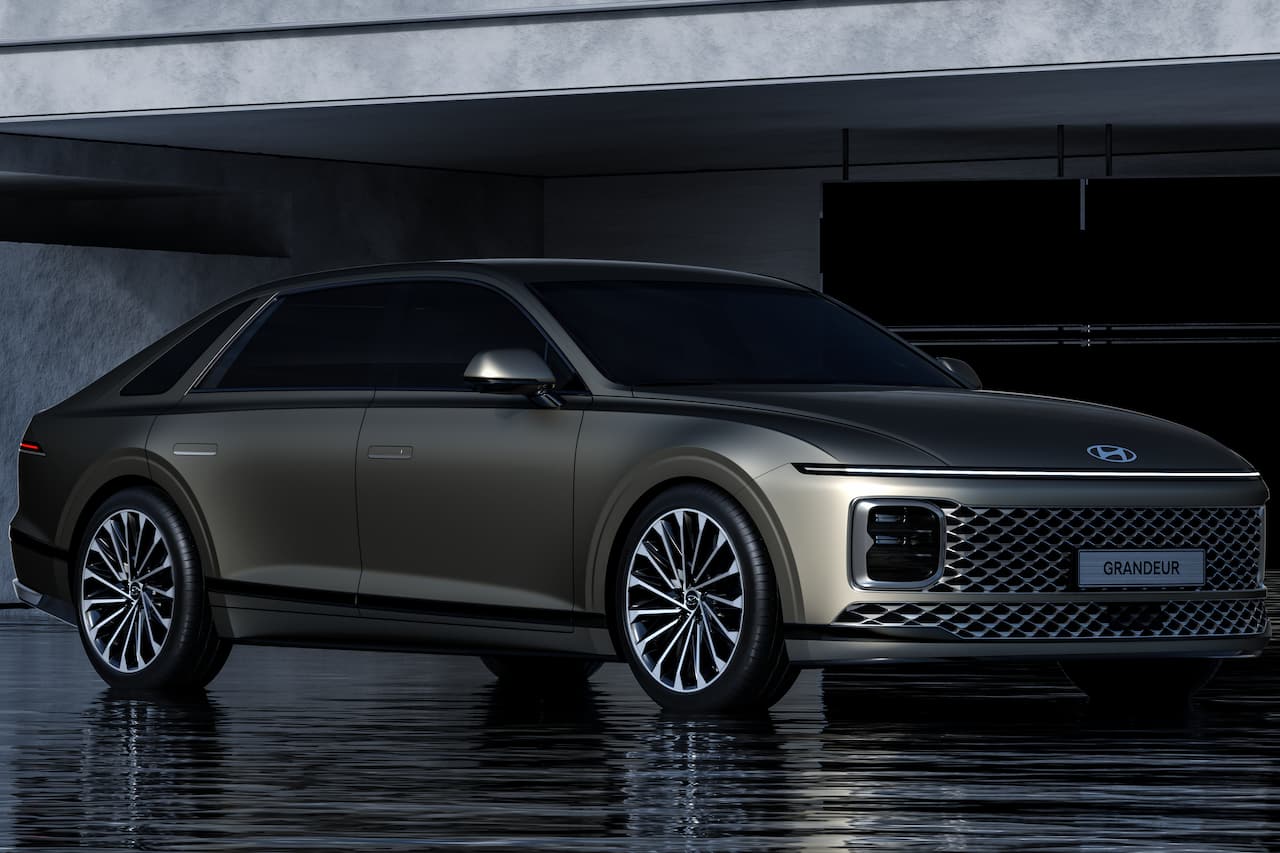
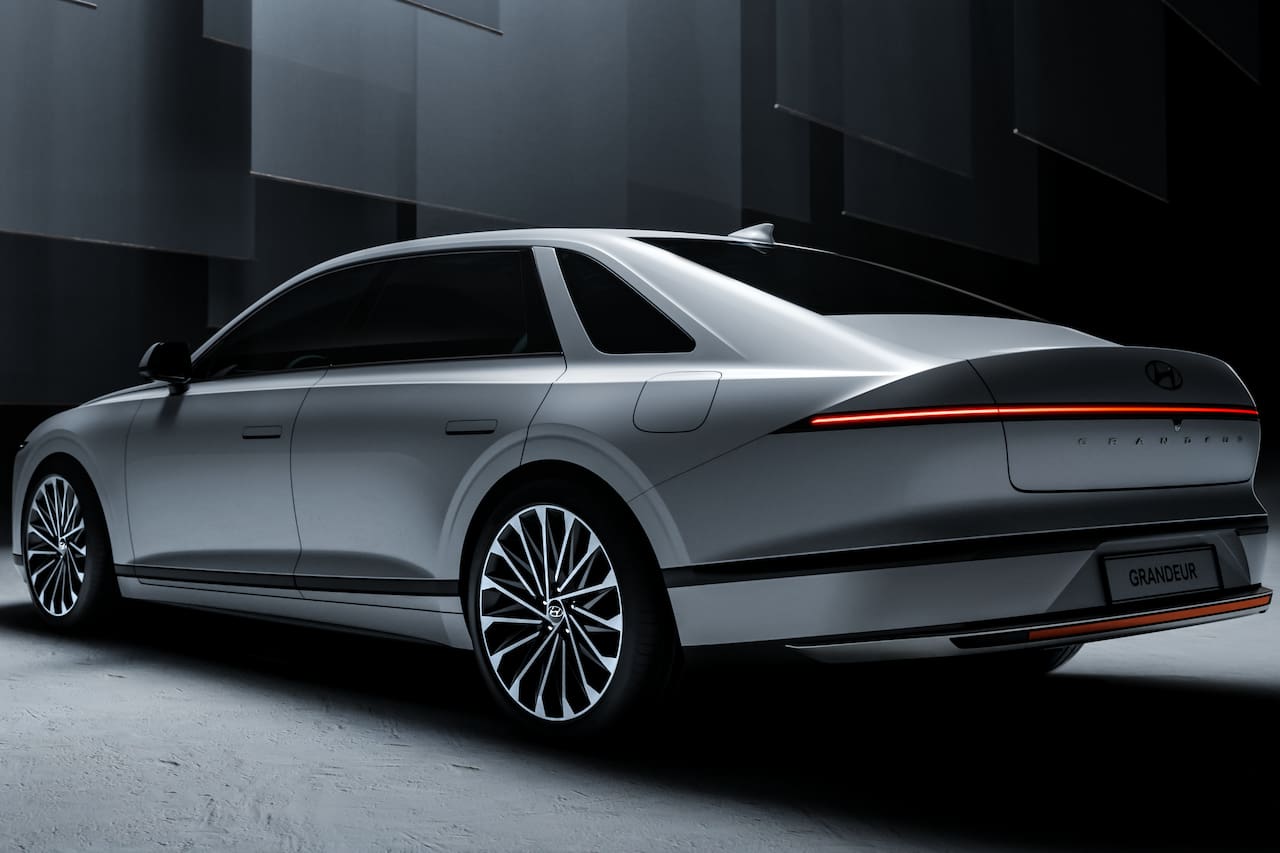
The ‘Seamless Horizon’ design returns in a super-slim tail lamp spanning the car’s taut rear-end, underlining the width and confident stance of the sedan. Wide-spaced model inscription and a clean design for the boot lid and bumper add to the car’s polished look here. For the plug-in hybrid model, we expect the same design recipe with new subtle styling touches.
Interior
The interior of the all-new Hyundai Grandeur looks modern with minimalist vibes, but just like its exterior, it harks back to the first-gen model. Consider the three-spoke steering wheel, for instance, which is inspired by the single-spoke steering wheel of the 1986 Hyundai Grandeur. However, it’s a 21st-century interpretation of that classic steering wheel, featuring backlighting (and maybe even touch-capacitive controls) for easier operation of various functions.
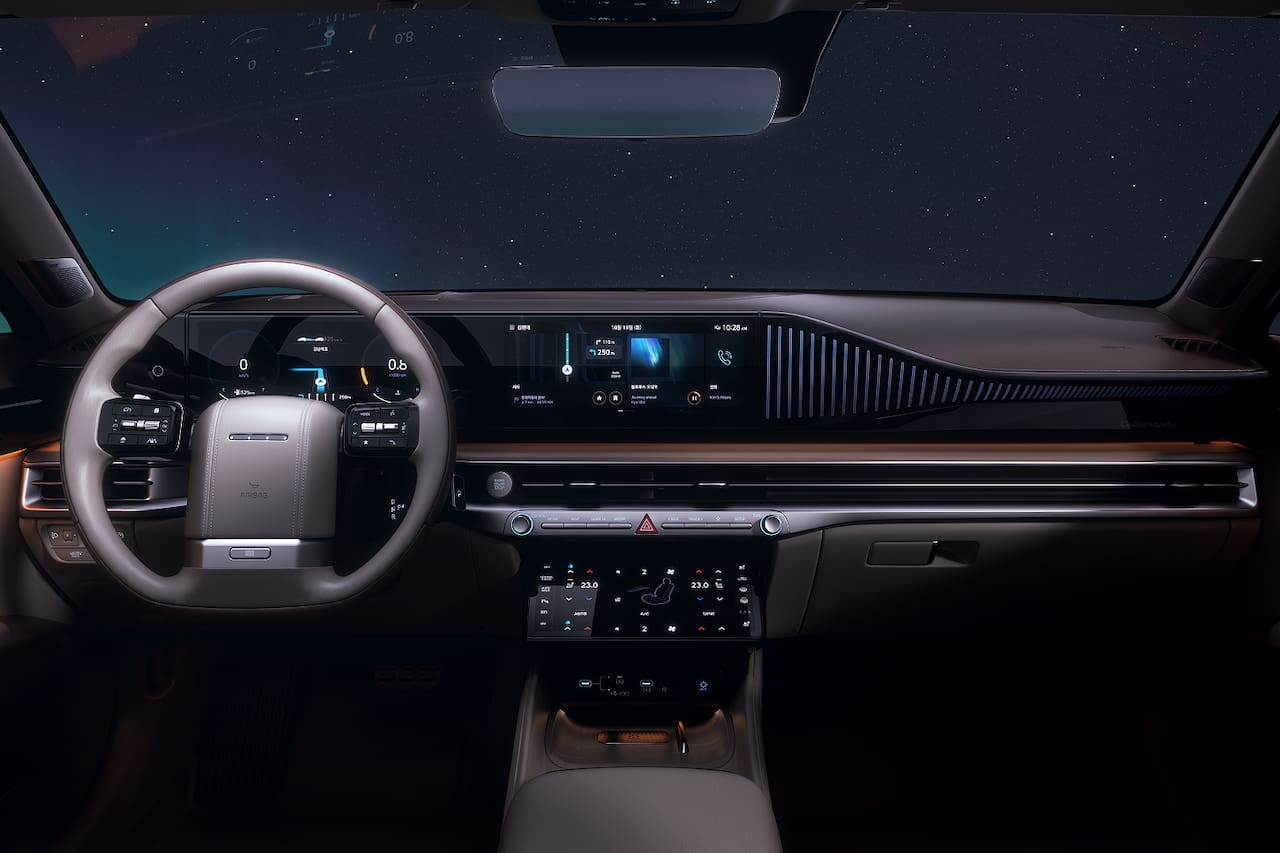
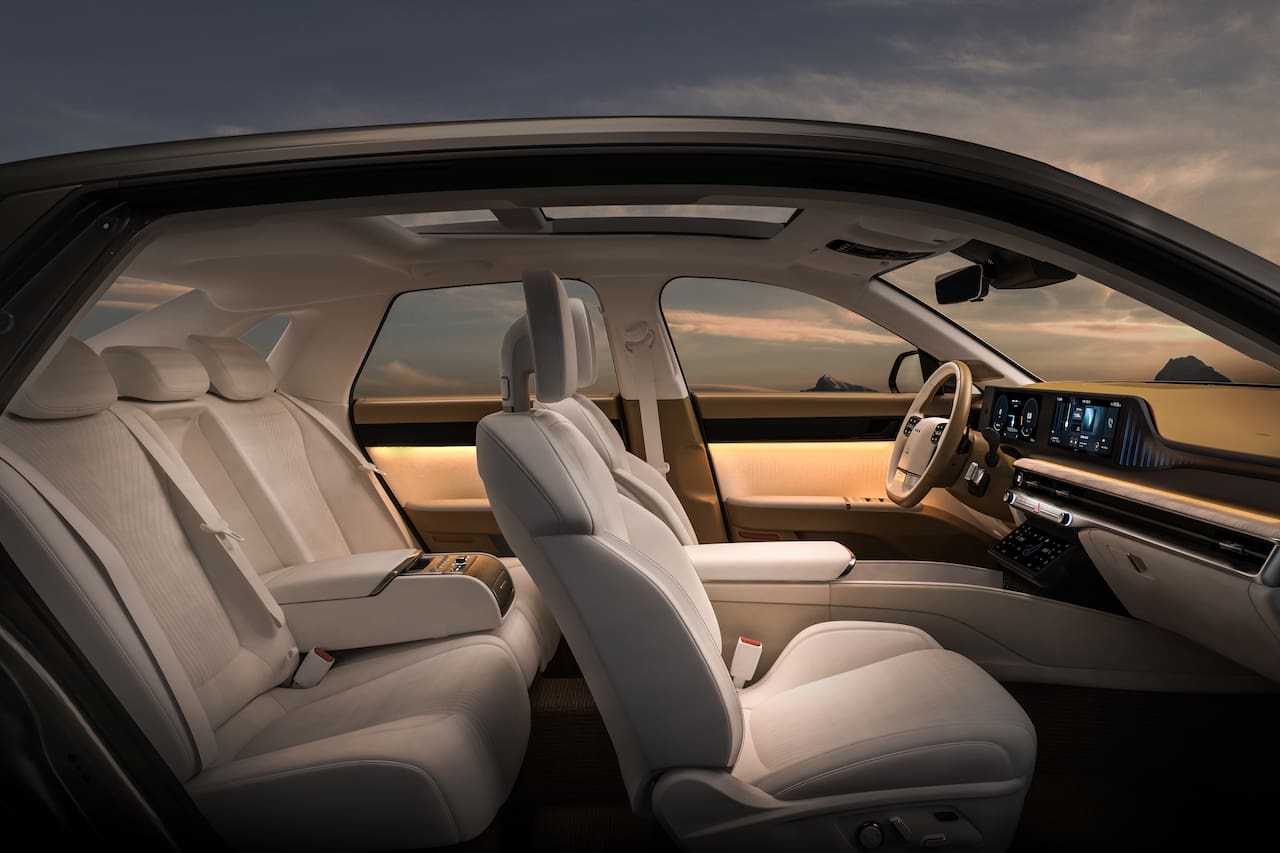
An ambient lighting strip, positioned behind gives the dual-screen panel passively illuminates the dashboard in style. Premium materials like real wood, aluminum, and naturally dyed Nappa leather would make customers forget they are sitting in a Hyundai, not a Genesis.
The wide AC vents on the dashboard are in line with the sleek and low-profile theme of the car’s overall design. A slim control panel below these vents provides physical controls for the infotainment system’s basic functions like power on/off, volume, navigation, radio tuning, etc. The gear knob is on the steering wheel, which leads to a more spacious, neater, and more convenient storage area in the floor console.
Three large screens
The highlight of the all-new Hyundai Grandeur has to be the triple-screen layout, which is quite similar to what Audi and Land Rover drivers are used to. There’s ample digital real estate in the car.
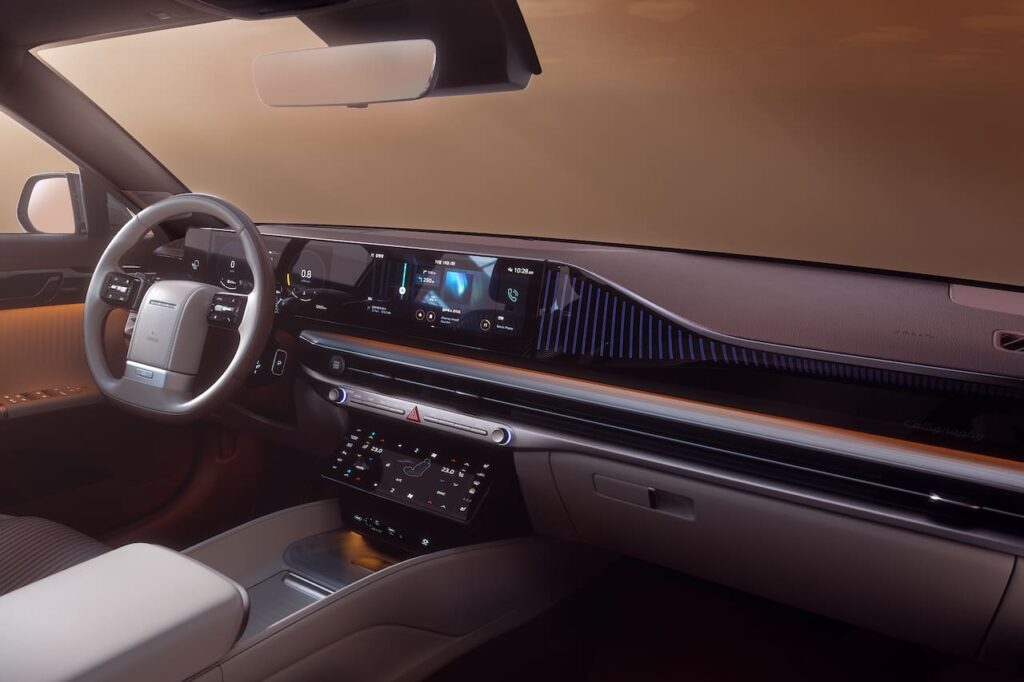
Two large screens—a digital instrument cluster and a touchscreen infotainment system have been housed in a single black panel. The screen block looks upright and not canted towards the driver like we’ve seen on many modern cars. This panel doesn’t end at the screen abruptly on either side. There is a vertical extension with a sensor or something else integrated into it on the driver side and a horizontal extension ending in a drop-down effect on the passenger side. The latter features vertical lines with blue backlighting for a premium look.
The biggest novelty factor is a third, floating touchscreen below the control panel, allowing the driver and front passenger to conveniently adjust comfort functions. USB Type-C ports are located under this screen. There’s an illuminated pocket under the ports, and it serves as a wireless charging deck. The rear seats are reclinable, like in the Ioniq 5. Expect the same features to be available in future versions, including the Grandeur PHEV.
Specifications
The redesigned Grandeur is longer, wider, and lower than the previous generation car. The implication is more interior space, as the sedan appeals to chauffeur-driven markets in the Middle East, China, and its home market in South Korea. Hyundai has sold over 2 million units of the nameplate since its launch in 1986, and in 2020, it was the best-selling car in South Korea for the fifth consecutive year, appreciated for these strengths.
| Aspect | Seventh-gen Grandeur Dimension | Sixth-gen Grandeur Dimension | Difference |
| Length | 5,035 mm | 4,990 mm | +45 mm |
| Width | 1,880 mm | 1,875 mm | +5 mm |
| Height | 1,460 mm | 1,470 mm | -10 mm |
| Wheelbase | 2,895 mm | 2,885 mm | +10 mm |
The Hyundai Grandeur Hybrid uses a combination of a 1.6-liter turbocharged gas engine and an electric motor that results in a total power of 230 PS. The engine produces 180 PS and 27.0 kgf.m of torque and the motor generates 44.2 kW and 264 Nm of torque. The new hybrid sedan delivers a fuel economy of up to 18 km/l (42 mpg).
| Aspect | Hyundai Grandeur Hybrid Specification |
| Length | 5,035 mm |
| Width | 1,880 mm |
| Height | 1,460 mm |
| Wheelbase | 2,895 mm |
| Trunk Volume | 480 liters |
| Drivetrain Layout | 2WD |
| Engine | 1.6L Smartstream turbocharged gasoline |
| Engine Power | 180 PS (177 hp) at 5,500 rpm |
| Engine Torque | 27.0 kgf.m (195 lb.-ft.) at 1,500 rpm |
| Motor Power | 44.2 kW (59 hp) |
| Motor Torque | 264 Nm (195 lb.-ft.) |
| System Power | 230 PS (227 hp) |
| Fuel Tank Capacity | 50 liters (13 gallons) |
| Fuel Economy | 18-inch wheels – 18 km/l (42.3 mpg) 19-inch wheels – 16.7 km/l (39.3 mpg) 20-inch wheels – 15.7 km/l (36.9 mpg) |
Price
The new Hyundai Grandeur Hybrid’s prices in South Korea start at KRW 44.09 million (USD 32,889) and go up to KRW 53.04 million (USD 39,565).
Sales
Being the best-selling Hyundai in the brand’s home market for the last seven years, the Grandeur is undeniably an automotive legend in South Korea. In 2023, Hyundai sold 113,062 units of the Grandeur. Interestingly, the Hybrid variant had a higher contribution to this figure. The ICE-only Grandeur recorded 51,155 units in annual sales, while the Grandeur Hybrid registered 61,907 units in annual sales. It’s evident that customers are increasingly preferring electrification in their Grandeur.
| Year | Hyundai Grandeur sales (S. Korea) |
| 2016 | 68,409 |
| 2017 | 131,950 |
| 2018 | 113,101 |
| 2019 | 103,349 |
| 2020 | 145,463 |
| 2021 | 89,084 |
| 2022 | 67,030 |
| 2023 | 113,062 |
While the Grandeur was once again the no. 1 Hyundai in terms of sales in 2021, the volume had fallen considerably since 2020. The full redesign and a more robust supply chain seem to have helped sales recover to a six-digit figure in 2023. We expect 2024 to be a better year for the flagship sedan.
Featured Image: Hyundai
